KEY FEATURES OF MANAGEMENT Control The
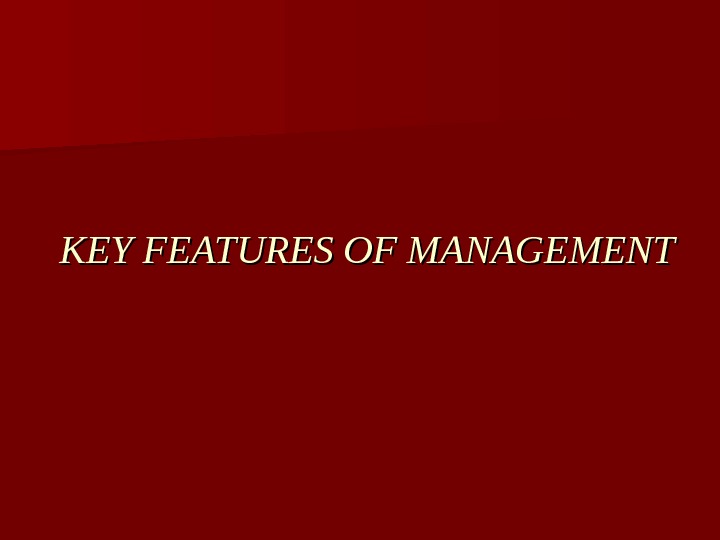
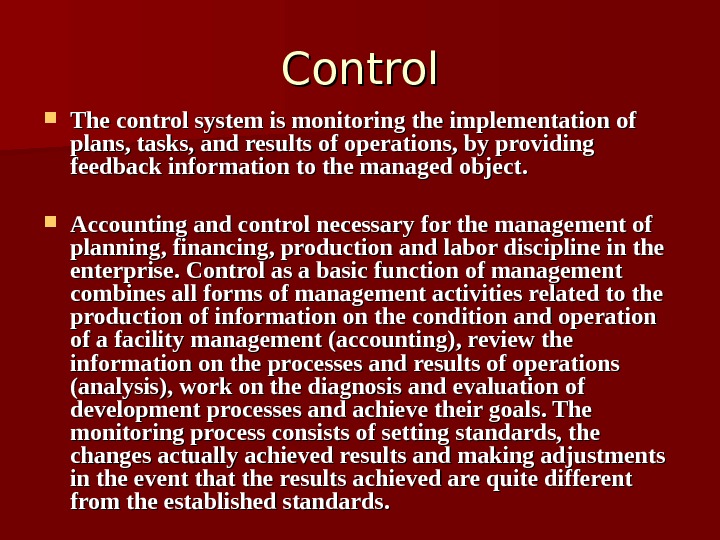
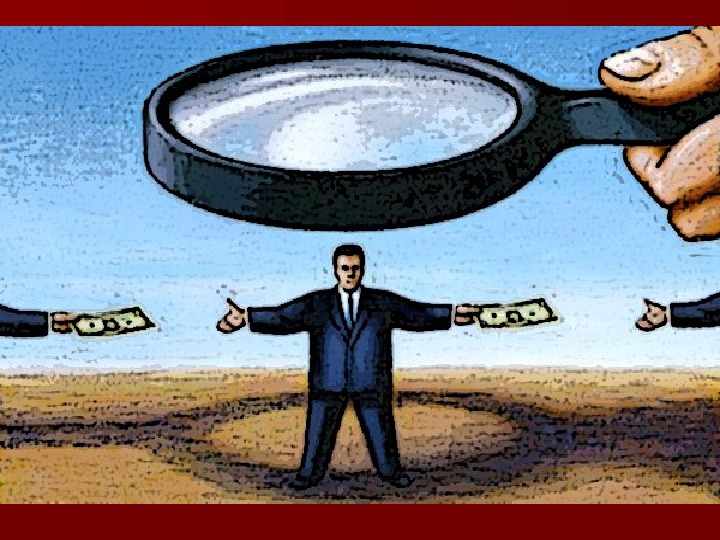
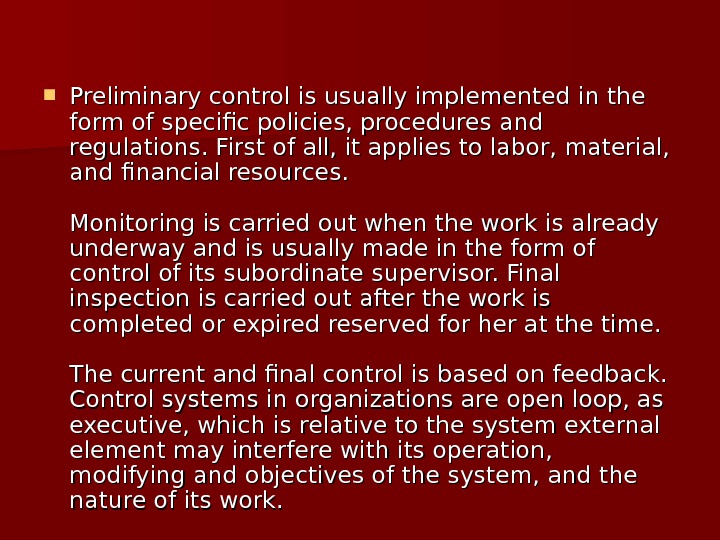
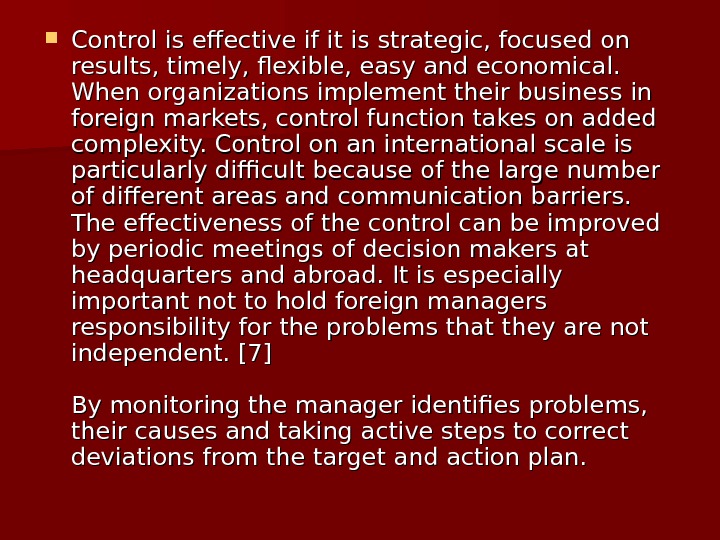

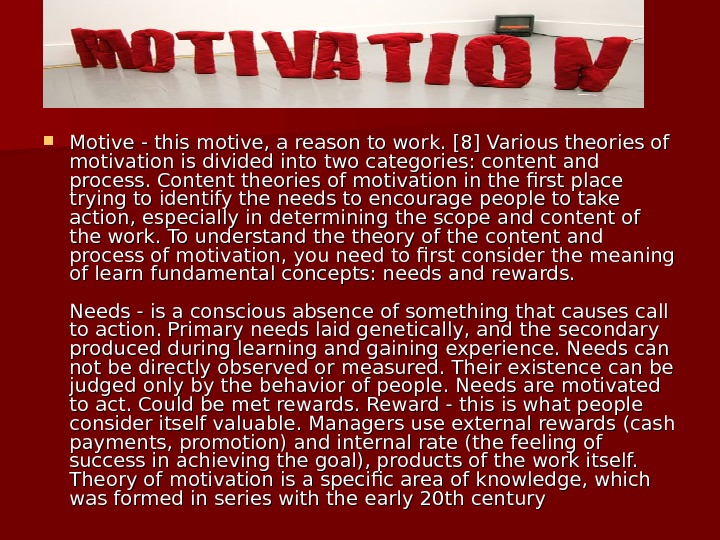
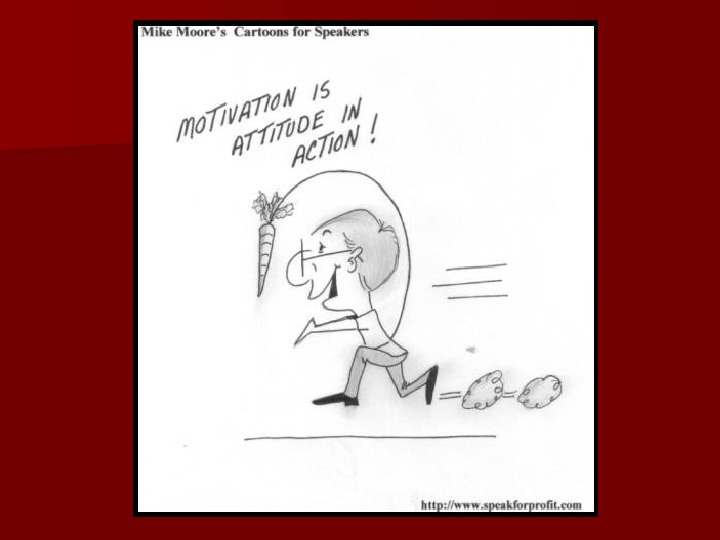
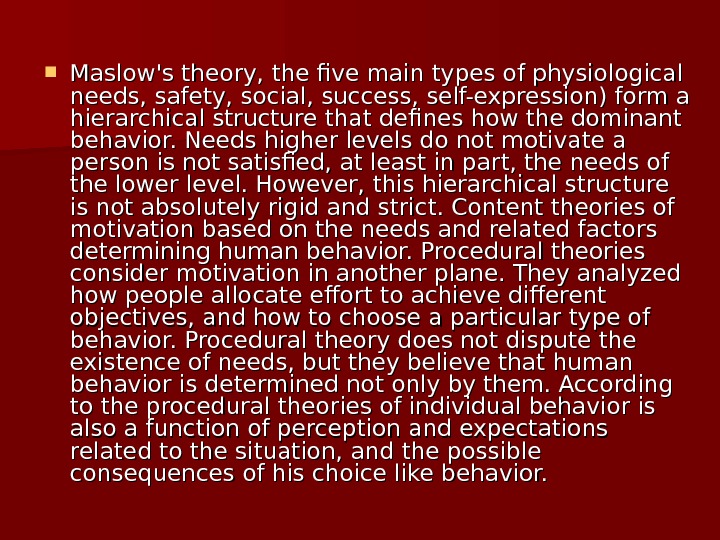

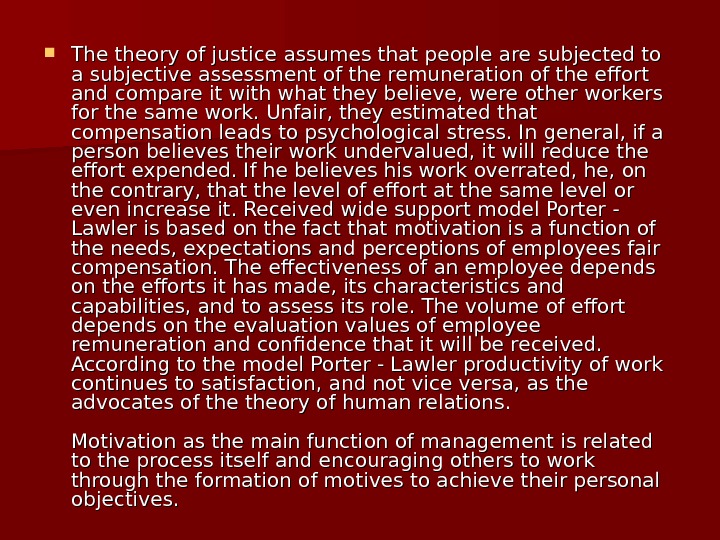
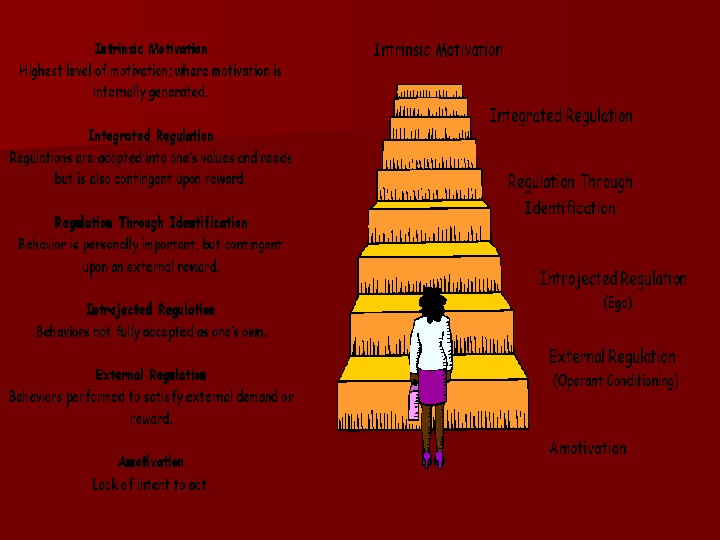
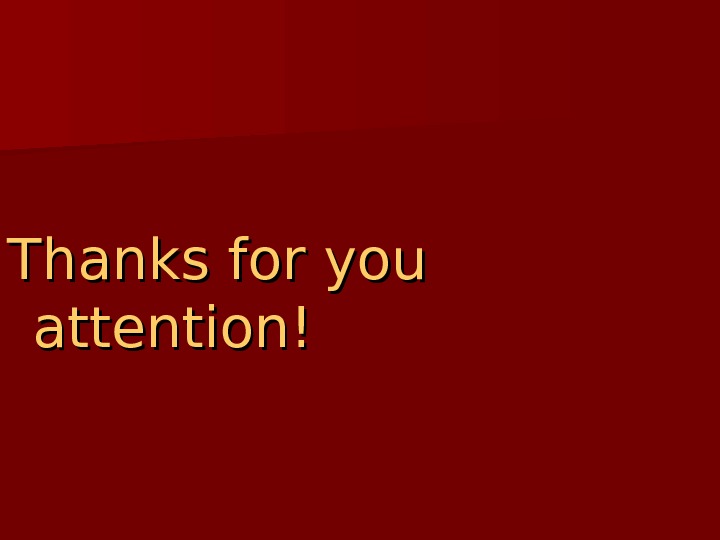
- Размер: 612.5 Кб
- Количество слайдов: 13
Описание презентации KEY FEATURES OF MANAGEMENT Control The по слайдам
 KEY FEATURES OF MANAGEMENT
KEY FEATURES OF MANAGEMENT
 Control The control system is monitoring the implementation of plans, tasks, and results of operations, by providing feedback information to the managed object. Accounting and control necessary for the management of planning, financing, production and labor discipline in the enterprise. Control as a basic function of management combines all forms of management activities related to the production of information on the condition and operation of a facility management (accounting), review the information on the processes and results of operations (analysis), work on the diagnosis and evaluation of development processes and achieve their goals. The monitoring process consists of setting standards, the changes actually achieved results and making adjustments in the event that the results achieved are quite different from the established standards.
Control The control system is monitoring the implementation of plans, tasks, and results of operations, by providing feedback information to the managed object. Accounting and control necessary for the management of planning, financing, production and labor discipline in the enterprise. Control as a basic function of management combines all forms of management activities related to the production of information on the condition and operation of a facility management (accounting), review the information on the processes and results of operations (analysis), work on the diagnosis and evaluation of development processes and achieve their goals. The monitoring process consists of setting standards, the changes actually achieved results and making adjustments in the event that the results achieved are quite different from the established standards.

 Preliminary control is usually implemented in the form of specific policies, procedures and regulations. First of all, it applies to labor, material, and financial resources. Monitoring is carried out when the work is already underway and is usually made in the form of control of its subordinate supervisor. Final inspection is carried out after the work is completed or expired reserved for her at the time. The current and final control is based on feedback. Control systems in organizations are open loop, as executive, which is relative to the system external element may interfere with its operation, modifying and objectives of the system, and the nature of its work.
Preliminary control is usually implemented in the form of specific policies, procedures and regulations. First of all, it applies to labor, material, and financial resources. Monitoring is carried out when the work is already underway and is usually made in the form of control of its subordinate supervisor. Final inspection is carried out after the work is completed or expired reserved for her at the time. The current and final control is based on feedback. Control systems in organizations are open loop, as executive, which is relative to the system external element may interfere with its operation, modifying and objectives of the system, and the nature of its work.
 Control is effective if it is strategic, focused on results, timely, flexible, easy and economical. When organizations implement their business in foreign markets, control function takes on added complexity. Control on an international scale is particularly difficult because of the large number of different areas and communication barriers. The effectiveness of the control can be improved by periodic meetings of decision makers at headquarters and abroad. It is especially important not to hold foreign managers responsibility for the problems that they are not independent. [7] By monitoring the manager identifies problems, their causes and taking active steps to correct deviations from the target and action plan.
Control is effective if it is strategic, focused on results, timely, flexible, easy and economical. When organizations implement their business in foreign markets, control function takes on added complexity. Control on an international scale is particularly difficult because of the large number of different areas and communication barriers. The effectiveness of the control can be improved by periodic meetings of decision makers at headquarters and abroad. It is especially important not to hold foreign managers responsibility for the problems that they are not independent. [7] By monitoring the manager identifies problems, their causes and taking active steps to correct deviations from the target and action plan.

![Motive - this motive, a reason to work. [8] Various theories of motivation is Motive - this motive, a reason to work. [8] Various theories of motivation is](/docs//key_features_of_management_images/key_features_of_management_6.jpg) Motive — this motive, a reason to work. [8] Various theories of motivation is divided into two categories: content and process. Content theories of motivation in the first place trying to identify the needs to encourage people to take action, especially in determining the scope and content of the work. To understand the theory of the content and process of motivation, you need to first consider the meaning of learn fundamental concepts: needs and rewards. Needs — is a conscious absence of something that causes call to action. Primary needs laid genetically, and the secondary produced during learning and gaining experience. Needs can not be directly observed or measured. Their existence can be judged only by the behavior of people. Needs are motivated to act. Could be met rewards. Reward — this is what people consider itself valuable. Managers use external rewards (cash payments, promotion) and internal rate (the feeling of success in achieving the goal), products of the work itself. Theory of motivation is a specific area of knowledge, which was formed in series with the early 20 th century
Motive — this motive, a reason to work. [8] Various theories of motivation is divided into two categories: content and process. Content theories of motivation in the first place trying to identify the needs to encourage people to take action, especially in determining the scope and content of the work. To understand the theory of the content and process of motivation, you need to first consider the meaning of learn fundamental concepts: needs and rewards. Needs — is a conscious absence of something that causes call to action. Primary needs laid genetically, and the secondary produced during learning and gaining experience. Needs can not be directly observed or measured. Their existence can be judged only by the behavior of people. Needs are motivated to act. Could be met rewards. Reward — this is what people consider itself valuable. Managers use external rewards (cash payments, promotion) and internal rate (the feeling of success in achieving the goal), products of the work itself. Theory of motivation is a specific area of knowledge, which was formed in series with the early 20 th century

 Maslow’s theory, the five main types of physiological needs, safety, social, success, self-expression) form a hierarchical structure that defines how the dominant behavior. Needs higher levels do not motivate a person is not satisfied, at least in part, the needs of the lower level. However, this hierarchical structure is not absolutely rigid and strict. Content theories of motivation based on the needs and related factors determining human behavior. Procedural theories consider motivation in another plane. They analyzed how people allocate effort to achieve different objectives, and how to choose a particular type of behavior. Procedural theory does not dispute the existence of needs, but they believe that human behavior is determined not only by them. According to the procedural theories of individual behavior is also a function of perception and expectations related to the situation, and the possible consequences of his choice like behavior.
Maslow’s theory, the five main types of physiological needs, safety, social, success, self-expression) form a hierarchical structure that defines how the dominant behavior. Needs higher levels do not motivate a person is not satisfied, at least in part, the needs of the lower level. However, this hierarchical structure is not absolutely rigid and strict. Content theories of motivation based on the needs and related factors determining human behavior. Procedural theories consider motivation in another plane. They analyzed how people allocate effort to achieve different objectives, and how to choose a particular type of behavior. Procedural theory does not dispute the existence of needs, but they believe that human behavior is determined not only by them. According to the procedural theories of individual behavior is also a function of perception and expectations related to the situation, and the possible consequences of his choice like behavior.

 The theory of justice assumes that people are subjected to a subjective assessment of the remuneration of the effort and compare it with what they believe, were other workers for the same work. Unfair, they estimated that compensation leads to psychological stress. In general, if a person believes their work undervalued, it will reduce the effort expended. If he believes his work overrated, he, on the contrary, that the level of effort at the same level or even increase it. Received wide support model Porter — Lawler is based on the fact that motivation is a function of the needs, expectations and perceptions of employees fair compensation. The effectiveness of an employee depends on the efforts it has made, its characteristics and capabilities, and to assess its role. The volume of effort depends on the evaluation values of employee remuneration and confidence that it will be received. According to the model Porter — Lawler productivity of work continues to satisfaction, and not vice versa, as the advocates of the theory of human relations. Motivation as the main function of management is related to the process itself and encouraging others to work through the formation of motives to achieve their personal objectives.
The theory of justice assumes that people are subjected to a subjective assessment of the remuneration of the effort and compare it with what they believe, were other workers for the same work. Unfair, they estimated that compensation leads to psychological stress. In general, if a person believes their work undervalued, it will reduce the effort expended. If he believes his work overrated, he, on the contrary, that the level of effort at the same level or even increase it. Received wide support model Porter — Lawler is based on the fact that motivation is a function of the needs, expectations and perceptions of employees fair compensation. The effectiveness of an employee depends on the efforts it has made, its characteristics and capabilities, and to assess its role. The volume of effort depends on the evaluation values of employee remuneration and confidence that it will be received. According to the model Porter — Lawler productivity of work continues to satisfaction, and not vice versa, as the advocates of the theory of human relations. Motivation as the main function of management is related to the process itself and encouraging others to work through the formation of motives to achieve their personal objectives.

 Thanks for you attention!
Thanks for you attention!
